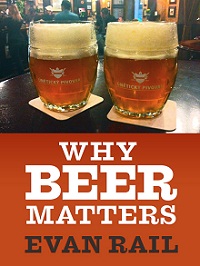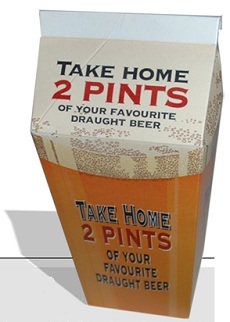 In the early 1980s, Anheuser-Busch chairman of the board August Busch III ordered that freshly brewed cans of Budweiser and Bud Light would be cryogenically frozen, so that they could be tasted against each other over time.
In the early 1980s, Anheuser-Busch chairman of the board August Busch III ordered that freshly brewed cans of Budweiser and Bud Light would be cryogenically frozen, so that they could be tasted against each other over time.
More than 20 years later, Wall Street Journal reporter Sarah Ellison described a scene where Busch and Doug Muhleman, then A-B’s vice president for brewing and technology, had cans from 1982, 1988, 1993, 1998 and 2003 thawed and set before them in the corporate tasting room. She wrote, “Muhleman . . . says the company didn’t set out to make the beers less bitter. He calls the change ‘creep,’ the result of endlessly modifying the beer to allow for change in ingredients, weather and consumer taste. ‘Through continues feedback, listening to consumers, this is a change over 20, 30, 40 years,’ says Mr. Muhleman, gesturing toward the row of Budweiser cans. ‘Over time there is a drift.’
“The sample cans demonstrate how ‘creep’ works. The difference in taste between two beers brewed five years apart is indistinguishable. Yet, the difference between the 1982 beer and the 2003 beer is distinct. ‘The bones are the same. The same structure,’ says Mr. Muhleman. Overall, however, ‘the beers have gotten a little less bitter.'”
In Why Beer Matters Evan Rail suggests we consider “beer’s unstuck relationship to time.”
Which is why I find myself thinking about beer’s bones. Why when I drink a crappy bottle of Pilsner Urquell it pains me to think about how good it can still taste in the caves underneath the brewery. Why if I didn’t have a cold that disconnected by olfactory system from my brain yesterday — when temperatures here in St. Louis were flat out balmy — I would have been sitting in front of Urban Chestnut Brewing drinking Zwickel, a beer most definitely unstuck in place as well as time.
Beer Matters is first of about Rail’s own relationship with beer.
I can’t explain what beer means for everyone: as a subject, beer is too broad and deep, too varied and multiform, just like the wide public for whom it has clearly come to mean so much. But I can tell you a few things about beer that I like most myself, why beer has come to matter to me, and what I tell people when they ask why I have chosen to write about it.
An allusion to Billy Pilgrim aside, this relationship is an act of free will. He writes, “If the unexamined life has less merit than one which has borne deep investigation, clearly there is some value in caring about what you eat and drink.”
He gives 937 words to his personal obsession with the Polish smoked-wheat beer known as Grodziskie, and part of the story is about how quickly a single beer can disappear.
Despite its recent fall from grace Budweiser hardly seems in such danger. And I don’t really care what a can from 1982 might taste like. But I do appreciate that August Busch III understood why it matters, why beer matters.
*****
Now the full disclosure. Evan Rail and I have been drinking together. He bought rounds. I bought rounds. He emailed me a copy of Why Beer Matters for review. In fact, I bought it from Amazon, in part because we are sort of friends and in part because of curiosity about how the whole “download it to Kindle” would work even though our family does not yet don’t own a Kindle. (We go to the library a lot, plus I read it on my phone.)
The essay runs about 6,500 words, a chapter in some books. You’d like to read it in a beer publication, but find me one that will print something of such length. I have no idea what Beer Matters might lead to from Evan — notice he was “Rail” in the review part, very professional, but this is the personal part — or others. But I hope it’s more.
 The Session #60, Let’s Talk Growlers, is in the record books.
The Session #60, Let’s Talk Growlers, is in the record books. OK, I’m probably just out of it. This may have already been discussed to death on various beer forums. Perhaps under Innovation, as in “Is this more are less innovative than Green IPA for St. Patrick’s Day?”
OK, I’m probably just out of it. This may have already been discussed to death on various beer forums. Perhaps under Innovation, as in “Is this more are less innovative than Green IPA for St. Patrick’s Day?”